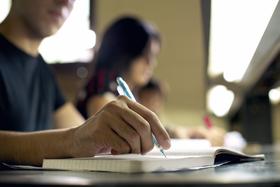Top Rankings
Elizabeth School District ranks among the top 20% of public school district in Colorado for:
Category
Attribute
Math Proficiency
Highest math proficiency (Top 20%)
Graduation Rate
Highest graduation rate (Top 5%)
For the 2025-26 school year, there are 4 public elementary schools serving 1,526 students in Elizabeth School District. This district's average elementary testing ranking is 8/10, which is in the top 30% of public elementary schools in Colorado.
Public Elementary Schools in Elizabeth School District have an average math proficiency score of 37% (versus the Colorado public elementary school average of 33%), and reading proficiency score of 45% (versus the 43% statewide average).
Minority enrollment is 20% of the student body (majority Hispanic), which is less than the Colorado public elementary school average of 50% (majority Hispanic).
Overview
This School District
This State (CO)
# Schools
7 Schools
1,473 Schools
# Students
2,346 Students
601,879 Students
# Teachers
143 Teachers
38,351 Teachers
Student-Teacher Ratio
15:1
15:1
Student By Grade
District Rank
Elizabeth School District, which is ranked within the top 30% of all 176 school districts in Colorado (based off of combined math and reading proficiency testing data) for the 2022-2023 school year.
The school district's graduation rate of 92% has increased from 85-89% over five school years.
Overall District Rank
#39 out of 179 school districts
(Top 30%)
(Top 30%)
Math Test Scores (% Proficient)
37%
33%
Reading/Language Arts Test Scores (% Proficient)
47%
45%
Science Test Scores (% Proficient)
(20-21)30%
29%
Graduation Rate
92%
82%
Students by Ethnicity:
Diversity Score
0.33
0.62
% American Indian
1%
1%
% Asian
n/a
3%
% Hispanic
14%
35%
% Black
1%
5%
% White
81%
50%
% Hawaiian
n/a
n/a
% Two or more races
3%
6%
All Ethnic Groups
District Revenue and Spending
The revenue/student of $11,234 in this school district is less than the state median of $15,475. The school district revenue/student has declined by 5% over four school years.
The school district's spending/student of $11,440 is less than the state median of $15,793. The school district spending/student has declined by 5% over four school years.
Total Revenue
$26 MM
$13,426 MM
Spending
$27 MM
$13,702 MM
Revenue / Student
$11,234
$15,475
Spending / Student
$11,440
$15,793
Best Elizabeth School District Public Elementary Schools (2025-26)
School
(Math and Reading Proficiency)
(Math and Reading Proficiency)
Location
Quick Facts
Rank: #11.
Singing Hills Elementary School
(Math: 55-59% | Reading: 55-59%)
Rank:
Rank:
9/
Top 20%10
41012 Madrid Drive
Parker, CO 80134
(303) 646-1858
Parker, CO 80134
(303) 646-1858
Gr: K-5 | 398 students Student-teacher ratio: 16:1 Minority enrollment: 24%
Rank: #22.
Elizabeth Middle School
(Math: 27% | Reading: 50%)
Rank:
Rank:
6/
Top 50%10
34427 County Road 13
Elizabeth, CO 80107
(303) 646-4520
Elizabeth, CO 80107
(303) 646-4520
Gr: 6-8 | 401 students Student-teacher ratio: 16:1 Minority enrollment: 23%
Rank: #33.
Running Creek Elementary School
(Math: 40-44% | Reading: 30-34%)
Rank:
Rank:
6/
Top 50%10
900 South Elbert Street
Elizabeth, CO 80107
(303) 646-4620
Elizabeth, CO 80107
(303) 646-4620
Gr: K-5 | 311 students Student-teacher ratio: 15:1 Minority enrollment: 23%
Rank: #44.
Legacy Academy
Charter School
(Math: 30% | Reading: 37%)
Rank:
Rank:
5/
Bottom 50%10
1975 Legacy Circle
Elizabeth, CO 80107
(303) 646-2636
Elizabeth, CO 80107
(303) 646-2636
Gr: K-8 | 416 students Student-teacher ratio: 15:1 Minority enrollment: 12%
Recent Articles

School Vouchers: Updated Pros and Cons (2025 Review)
Comprehensive 2025 analysis of school vouchers, weighing benefits and challenges for families, funding, outcomes, and policy directions.

Benefits and Drawbacks of Homework in 2025
Explore updated 2025 insights on homework鈥檚 benefits, drawbacks, mental health impact, best practices, and policy trends in U.S. public schools.

Charter Schools vs Public Schools 2025: Key Differences & Trends
Explore updated 2025 insights comparing charter schools vs public schools, enrollment, academic outcomes, funding, and real-world examples for families and educators.





